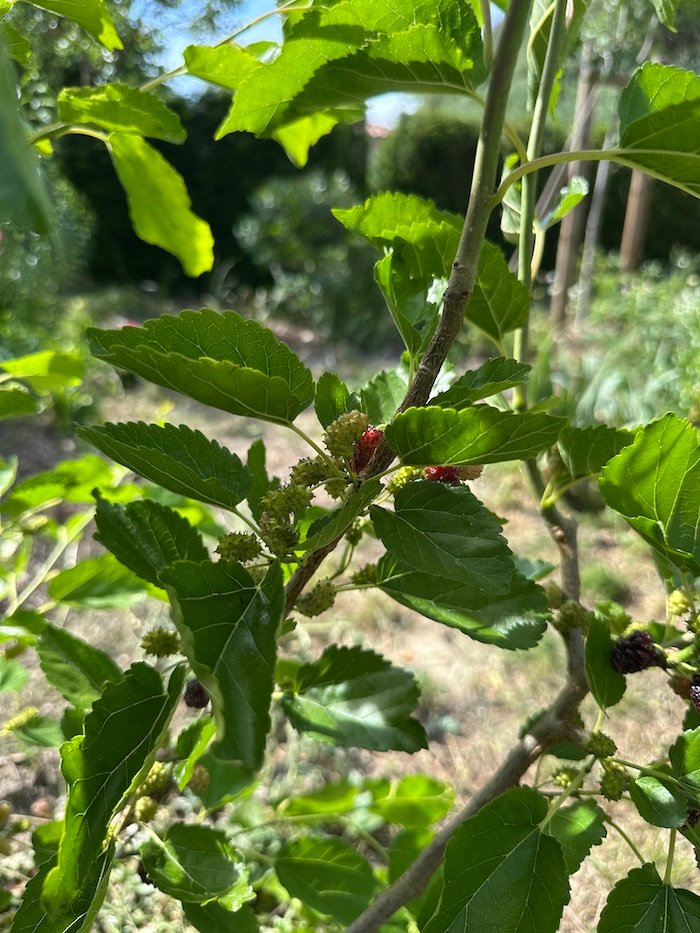Small fruit like blackberries, raspberries, strawberries etc. are difficult in this Mediterranean garden at 50masl. It is simply too hot and dry and even mulched and in half-shade it’s almost impossible to keep them watered enough for them to truly thrive.
One small fruit will do famously though: mulberries.
Though originally native to China and India, mulberry trees have long been cultivated and naturalized in many parts of the world including Mediterranean wine growing regions. They were cultivated for their berries but even more so as fodder for silk worms.
Morus alba ‘Milanowek’
Our mulberry tree was a Facebook Marketplace find in December 2023. Since then it has tripled in size but is still pretty small and I’m still undecided whether to grow it as a bush or a tree. It is difficult to replant because of its root system that consists of a deep taproot as well as wide-spreading roots. Since I planted it pretty close to a hedge I will probably need to turn it into a very narrow shrub or a stemmed tree. It can grow to a height of 7 meters.
Despite being a “Morus alba”, Milanowek produces longish purple berries in May and June, that are very sweet, aromatic and juicy. It is an autofertile Polish variety
Morus alba Milanowek needs deep and fertile, well drained soil in full sun. It is pretty drought-tolerant, once established, very frost hardy (down to – 28°C) and it tolerates even strong winds. It doesn’t mind at all being cut back – the time for that would be in November. It is also a great shade tree with bright green leaves that turn golden yellow in the fall. It can suffer from rust or powdery mildew – so far we have been lucky in that regard. And it can reach a very ripe old age of up to 150 years. All in all an easy to grow and very robust tree with a lot to offer.
Harvesting Mulberries
This is where things become a bit challenging. Mulberries will ripen every day over several weeks. If not harvested, the ripe ones will fall off and in the case of pink or purple-colored berries will leave stains on tiles and such – a good reason for not planting this tree on or near a terrace or walkway but inside the garden proper.
Mulberries do not keep well when they’re off the tree either but need to be eaten or processed immediately. Which is why you won’t find mulberries in the market or supermarket.
Our tree is still small enough to pick a few ripe berries every day while walking through the garden. Later on it will be best to put a sheet under the tree and shake it every day to make the ripe berries fall down. At that time birds’ predilection for mulberries may also become a problem.


Leave a Reply